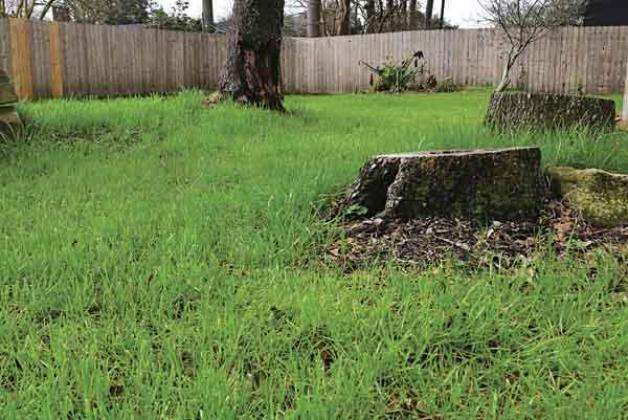
Bruce Schultz
For many Louisiana homeowners, a devastated lawn is just one more grim reminder of the terrible 2020 hurricane season.
Lawns have been damaged by fallen trees and heavy equipment needed for cleanup and for making home repairs.
Ron Strahan, LSU AgCenter turfgrass specialist, urged property owners not to get impatient.
“There’s not a lot that can be done at this current moment. If we were in late October or even early January, perennial ryegrass could be planted as a temporary cover for bare areas, but it’s a little late for ryegrass,” Strahan said.
Resodding is an option that can be done now, although Strahan said it is much more expensive.
Many lawns were stressed even before the hurricanes, Strahan said.
“Lawns were already weak going into all the inclement weather from a severe infestation of tropical sod webworms that was unrelenting until our nighttime temperatures got into the 50s,” he said.
Lawns of St. Augustine were damaged from a late summer and fall outbreak of chinch bugs as well.
“Multiple hurricanes were just icing on the cake,” he said.
Strahan said preparations can start now to have a yard ready for growing new grass or helping grass recover. He recommends starting with a soil test.
“When you are not feeling well, blood tests are prescribed by your doctor,” he said. “That’s exactly why we do soil sampling and analysis, to see why your lawn isn’t well. Soil test results will let you know what’s lacking with soil nutrients and if pH adjustments are necessary.”
He said soil pH can be addressed now with lime applied to raise pH, or elemental sulfur could be applied to lower pH.
“Delay application of fertilizers until we are greened up, about two months from now,” he said.
Soil sample kits can be obtained at parish extension offices, said Bradley Pousson, Cameron Parish county agent.
Pousson said many residences in southwest Louisiana, like his own, have damaged yards from excavators and track hoes, but his grass has been a low priority for his house that needed a new roof and has yet to get electricity restored.
Pousson said the cost of the first soil sample is $18, while getting two samples analyzed will cost $29, and $40 for three.
The kits have instructions for taking samples and shipping to the LSU AgCenter lab. He said proper fertilization can restore a lawn to good health, but that should not be done until late March to mid-April for the first application.
“Fertilize St. Augustinegrass again in June and possibly in August. Fertilize centipedegrass again in June or July if additional recovery is needed,” Pousson said.
He said aeration of a lawn’s soil may be necessary because of all the foot traffic and machinery that caused soil compaction.
“Some soils are just naturally prone to compaction, especially if they are high in clay content.”
He recommends waiting until the growing season to use a rented aerator on a lawn.
“Aeration can be the missing component for bringing your lawn back and as part of an overall maintenance plan that will take turfgrass to the next level.”
Strahan has suggestions for testing for compacted soil.
“Try pushing a medium-size screwdriver into the soil. If you feel a lot of resistance, soil compaction is a problem and debilitating to lawn roots,” Strahan said. “Stress on the roots from compaction always leads to poor turf health.”
He said it may be necessary to aerate several times, but it can show positive results soon.
He said badly damaged lawns may require seeding or sod to restore a lawn. Seeding options are limited to centipedegrass, bermudagrass or possibly Zenith zoysiagrass, he said, but there is no seed for St. Augustinegrass.
Strahan said seeding should not be done until April. With sodding or seeding, get a soil test and prepare the soil first.
Sodding can be done year-round in Louisiana. More information on sodding a lawn can be found at http://bit.ly/agcentersodlawn.
“Likely the sod will be dormant to semi-dormant right now. Don’t expect green sod in January and February,” he said.
Sod is sold by the pallet which covers 450 square foot, he said, with St. Augustine and zoysiagrass costing as much as $200-250 per pallet delivered, and centipedegrass about $150 or more per pallet.
“Make sodding or reseeding the last resort,” Strahan said. “Most problems can be fixed dramatically by improving cultural practices.”
Strahan stressed that patience and diligence are essential.
“Don’t judge your lawn by what you are seeing in late January. Follow through with getting a soil sample now. Address the soil pH, if necessary, before the winter ends. Fertilize the lawn during the growing season appropriately and aerate,” he said. “Your lawn will be beautiful by July 4, just in time for fireworks and backyard barbecues.”
